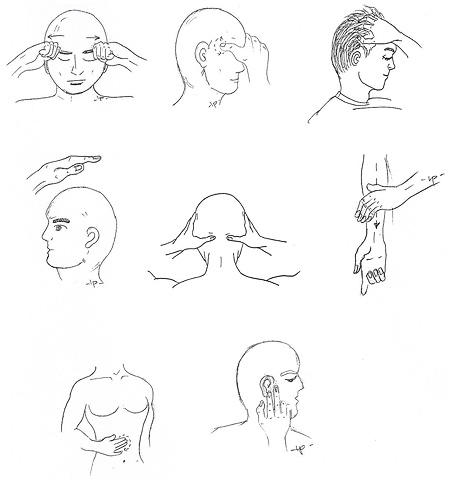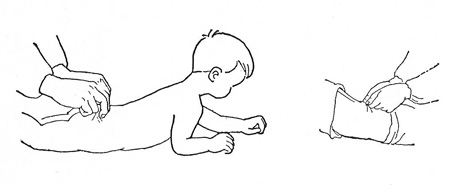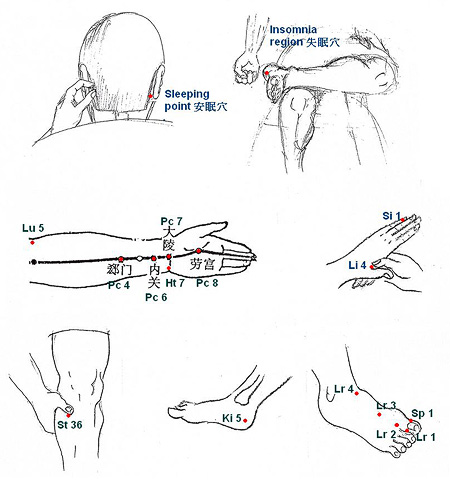Chinese Massage Techniques to Promote Sleep
Everyday we face challenges that keep our mind too active at bedtime, preventing us from getting to sleep. Stress-reduction strategies are a good way to create a relaxing bedtime routine, so as to help the body unwind and encourage restful sleep.
Chinese massage is mainly based on theories dealing with the organs and meridians. Massage therapists use the fingers to strike, press, knead and pinch to stimulate the acupoints along the meridians and promote the free flow of energy. Despite being applied to the external surface of the body, massage creates signals that induce physiological and chemical changes within the body, helping to restore the internal balance. People often report pleasant feelings and deep relaxation after receiving a massage, the mental pampering effect is just important and valuable as any physical benefit. A full body massage before going to bed is ideal. If not, a short backrub, face and/or scalp massage also helps prepare a person for sleep. Be sure that the massage strokes are slow, gentle, yet firm.
Below are simple massage protocols to promote sleep.
Protocol 1
 |
Using both index fingers, wipe from the centre of the forehead outwards 30 times; |
 |
Knead the temple region, 30 times; |
 |
Knead and wipe from the temple upward into the hair 30 times; |
 |
Pat the crown of the head, 10-30 times; |
 |
Press-knead the bottom of the skull with the thumbs 30 times; |
 |
Knead and rub on the inner and distal end of the forearm, 15 minutes each side; |
 |
Rub with the palm on the upper abdomen clockwise for 5 minutes; |
 |
Rub the inner auricular region for 2 minutes. |
 |
| Massage techniques for insomnia |
Protocol 2
 |
Press between the eyebrows with the middle finger tips, and knead or push up to the top of forehead 5-6 times; |
 |
Rub along the eyebrows with the index finger tips, back and forth for 5-6 times; |
 |
Tap around the eye sockets 3-4 times; |
 |
Press between the eyebrows with the middle fingers, knead or push down along the nose, then rub through the cheeks and reach the ears 2-3 times; |
 |
Follow the above steps but use the whole palm 5-6 times; |
 |
Comb the hair with all the fingers for 1 minute, then pinch the scalp for 1 minute; |
 |
Thumb knead the base of the skull for 1 minute; |
 |
Grasp the neck and shoulder, 10 times each region; |
 |
Rub the whole abdomen in a clockwise direction for 2 minutes; |
 |
Knead along the midline of the lower abdomen for 2 minutes. |
Protocol 3
The bladder meridian runs through the sides of the spine, it divides into two branches. The acupoints along the sections of the meridian have close relationships with the inner organs and thus can be specially used for regulating them. TCM suggests pinching muscles along the spine to promote sleep and release tension.
 |
| Pinching along the spine is suitable for the infantile digestive problems, and also insomnia, gastrointestinal and menstrual problems in adults. |
The massage usually starts from the hip and ends at the neck region. Therapists squeeze the tissues along the spine, as they hold, twist, knead or pinch at specific acupoints if necessary, e.g., shen shu (Bl 23), pi shu (Bl 20) and gan shu (Bl 18) to promote sleeping. The whole procedure is usually repeated 3-5 times.
Bosy points help ease insomnia
Insomnia can be due to many causes. Below are acupressure techniques that targets specific situations. See the pictures for references.
 |
Overly excited mind: nip and knead the boney process behind the lower auricle (known as the sleeping point); nip and grasp the palm web between the thumb and index finger (Li 4); nip and grasp the web between the big toe and second toe (Lr 2); fist the heel (known as the insomnia region). |
 |
Sleep disturbed by noise: nip and knead the sleeping point; rub the top of the foot in the depression between the 1st and 2nd toe (Lr 3); fist hit the insomnia region. |
 |
Night urination and early wakening: nip and knead the sleeping point; knead the lateral elbow region (Lu 5) in the front of the forearm; knead the midline of the wrist (Pc 7); knead the inner side of the Achilles tendon (Ki 5); rub on the top of the foot, depression between the 1st and 2nd toe (Lr 3); fist the insomnia region. |
 |
Physical fatigue: knead the outer nail corner of the little finger (Si 1), then knead the inner side of the wrist (Ht 7); straighten the knees and hold the knee back with the hands, and knead the inferior and lateral portion of the knee (St 36) with the thumbs; then rub on the dorsum of the foot in the depression between the 1st and 2nd toe (Lr 3); fist the insomnia region. |
 |
Sleep disturbed by nightmares or an uncomfortable pillow: rub the centre of the front forearm (Pc 4); adduct the ankle and knead the anterior depression of the ankle (Lr 4); pinch around the nail of the big toe (Sp 1 & Lr 1). |
 |
Sleep that is too light: knead the front of the forearm, 2-finger-breadths above the midline of the wrist (Pc 6); knead the center of the palm (Pc 8); pinch around the nail of the big toe (Sp 1 & Lr 1). |
 |
| Body points help insomnia |
The above techniques are suitable for most people to do, but may take several weeks to master well enough to help ease insomnia.
|